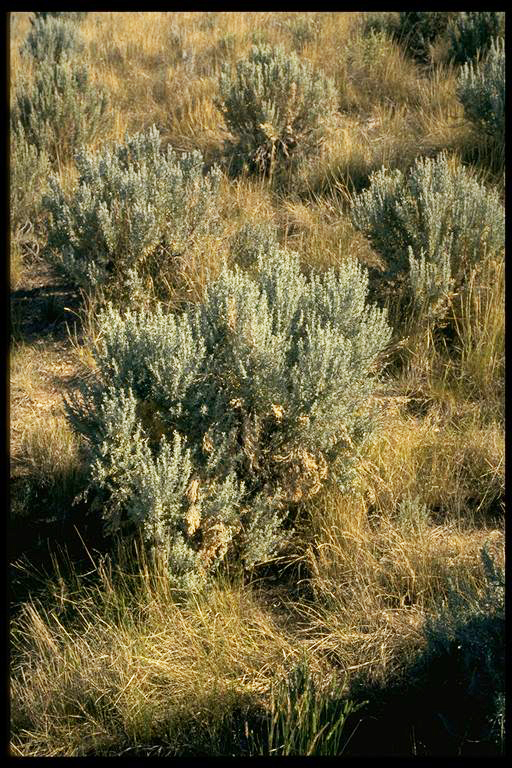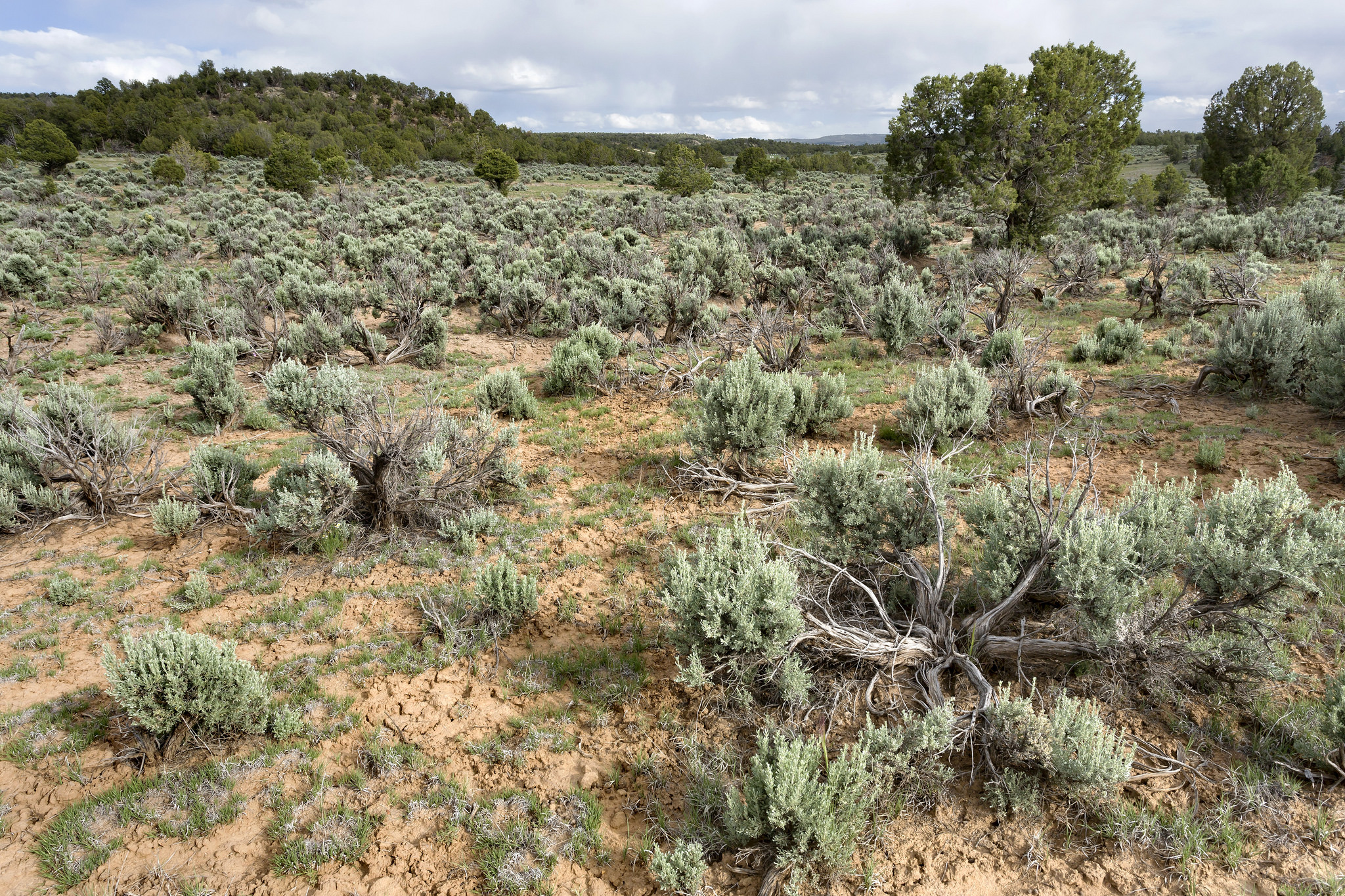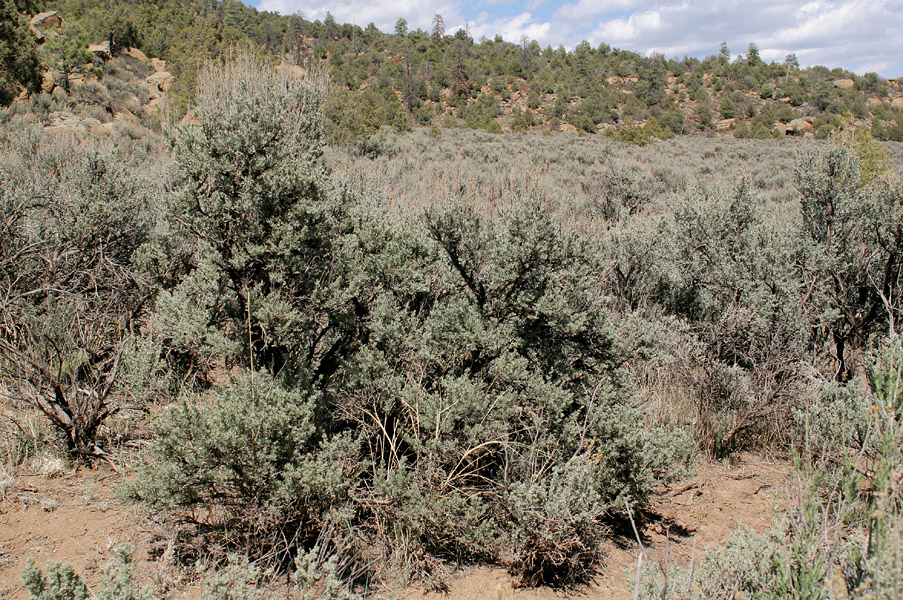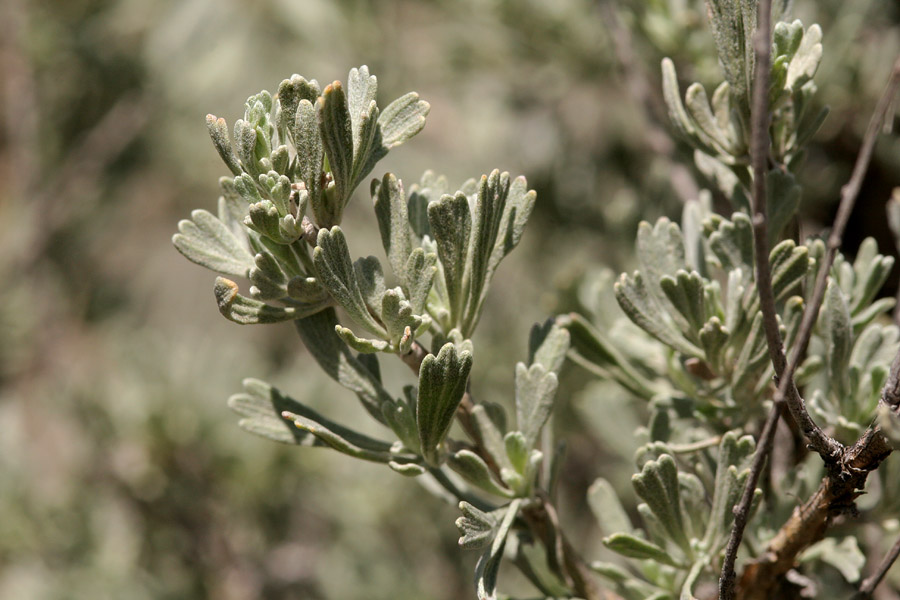Selected Plants of Navajo Rangelands
Sagebrush, big

Big sagebrush and its subspecies are tall, rounded, native shrubs with short, branched, woody trunks. They are normally about four feet high, but vary from two feet in arid conditions to as high as 15 feet on favorable sites. Big sagebrush is perhaps the most important shrub on western rangelands. Evergreen leaves and abundant seed production provide an excellent winter food source to numerous species of large mammals including mule deer, black-tailed deer, white-tailed deer, elk, pronghorn antelope, bighorn sheep and jackrabbits.
Big sagebrush can be distinguished by its aromatic leaves and stems. The scientific name, Artemisia tridentata, provides another useful clue: the three-toothed leaf tips. The leaves are grayish and slightly hairy or fuzzy. The trunks may form interesting and twisty shapes.
Sagebrush prefers dry soils, and will not grow at stream edges. It is used for tea, rope, medicine, and fuel.




©2018 NMSU Board of Regents.
Individual photographers retain all rights to their images.
Partially funded by the
Western Sustainable
Agriculture Research and Education Program
(westernsare.org; 435.797.2257),
project EW15-023.
Programs and projects supported by Western SARE are
equally open to all people.